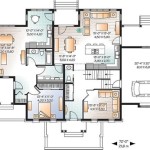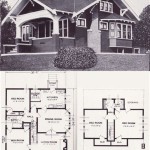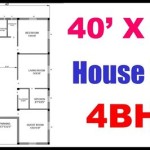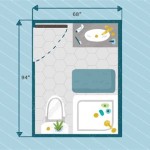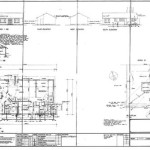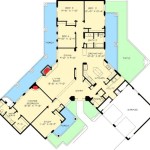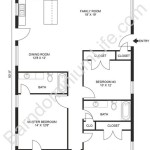Floor Plans Under 1000 Sq Ft: Maximizing Space and Style
Compact living is a growing trend, driven by factors such as affordability, environmental consciousness, and a desire for simplified lifestyles. Floor plans under 1000 square feet offer a viable solution for individuals, couples, and even small families seeking efficient and well-designed homes. These smaller residences require careful planning to ensure functionality, comfort, and a sense of spaciousness. This article will explore the key considerations and common design strategies involved in creating effective floor plans for homes under 1000 square feet.
The design of a small home necessitates a focus on maximizing every inch of available space. This requires a strategic approach to layout, storage, and furniture selection. Prioritizing functionality over excessive ornamentation is crucial in achieving a comfortable and livable environment within a limited footprint. Furthermore, careful consideration must be given to natural light, ventilation, and the overall flow of the space to create a welcoming and airy atmosphere.
Successfully designing a small floor plan involves making deliberate choices about the number and size of rooms. Open-concept designs are frequently employed to create a feeling of spaciousness by combining living, dining, and kitchen areas. This eliminates unnecessary walls and corridors, allowing natural light to penetrate deeper into the home. However, effective zoning within the open concept is essential to define distinct areas and prevent the space from feeling chaotic.
Understanding the Challenges of Smaller Spaces
Designing floor plans under 1000 square feet presents unique challenges compared to larger homes. One primary challenge is the limited storage space. Maximizing vertical space with built-in shelving, cabinets that extend to the ceiling, and lofted storage areas becomes essential. Multifunctional furniture, such as sofa beds and storage ottomans, is also valuable for optimizing space utilization. Another challenge is preventing the space from feeling cramped and claustrophobic. Strategies such as using light colors, incorporating large windows, and maintaining a clutter-free environment are important for creating a sense of openness.
Privacy can also be a concern, particularly in open-concept layouts. Careful consideration of furniture placement and the use of partial walls or screens can help delineate spaces and provide a sense of separation. Moreover, soundproofing materials can be incorporated into walls and floors to minimize noise transmission between different areas of the home. Finally, accessibility considerations should be taken into account, especially for individuals with mobility limitations. Ensuring adequate clearances and incorporating universal design principles can make the space more comfortable and usable for everyone.
Choosing the right layout is critical for optimizing functionality. Linear layouts, where the living spaces are arranged along a single axis, can be effective for narrow lots. Square or rectangular layouts offer more flexibility in terms of room placement and furniture arrangement. Circular layouts, although less common, can create a sense of flow and continuity. In addition to the overall footprint, the orientation of the building relative to the sun and prevailing winds should be considered to maximize natural light and ventilation.
Efficient use of vertical space is paramount in small homes. Tall cabinets, shelving units, and built-in storage solutions can significantly increase storage capacity without consuming excessive floor space. Lofted areas can be used for bedrooms, offices, or storage, providing additional living space without expanding the building's footprint. However, it's crucial to ensure that lofted areas are properly ventilated and accessible, especially for individuals with mobility limitations.
Key Design Strategies for Optimizing Space
Several design strategies can be employed to maximize space and create a comfortable living environment in homes under 1000 square feet. One common strategy is the use of open-concept layouts, which combine living, dining, and kitchen areas into a single, contiguous space. This eliminates the need for dividing walls, creating a more spacious and airy feel. However, careful zoning is necessary to define distinct functional areas within the open space. This can be achieved through furniture placement, changes in flooring materials, or the use of partial walls or screens.
Another effective strategy is the incorporation of multi-functional furniture. Sofa beds, storage ottomans, and tables with built-in storage can serve multiple purposes, reducing the need for separate pieces of furniture. Fold-down desks and tables can be concealed when not in use, freeing up valuable floor space. Murphy beds are another popular option for small bedrooms, allowing the room to be used as a living space during the day and a bedroom at night. These types of furniture can significantly improve the versatility and adaptability of a small home.
Strategic use of natural light is crucial in creating a bright and inviting atmosphere. Large windows and skylights can flood the interior with natural light, making the space feel larger and more open. Light-colored walls and ceilings reflect light more effectively, further enhancing the sense of spaciousness. Minimizing window coverings or using sheer curtains can maximize the amount of natural light entering the home. In addition to natural light, careful consideration should be given to artificial lighting. Recessed lighting, track lighting, and strategically placed lamps can provide adequate illumination while minimizing visual clutter.
Furthermore, the use of mirrors can create an illusion of depth and spaciousness. Mirrors placed strategically on walls or doors can reflect light and visually expand the room. The size and placement of mirrors should be carefully considered to avoid creating a distorted or overwhelming effect.
Considerations for Specific Room Designs in Small Homes
The design of each room needs special attention in small floor plans. In kitchens, vertical cabinets that reach the ceiling maximize storage for dishes and cookware. Slimline appliances can save space compared to full-sized versions. Bathrooms often benefit from wall-mounted sinks and toilets, which free up floor space. Shower-tub combinations are a compromise in cases where both a shower and tub are desired but space is limited.
Bedrooms require maximizing space with multifunctional beds that offer storage beneath. Closets can be optimized with built-in shelving and hanging systems. Entryways benefit from wall-mounted hooks and shelves for coats and shoes, preventing clutter from accumulating and making the space more inviting.
When selecting materials and finishes for a small home, it's important to prioritize durability and ease of maintenance. Hardwood floors, tile, and laminate are popular choices for flooring due to their durability and resistance to wear and tear. Countertops made from quartz, granite, or stainless steel are durable and easy to clean. Light-colored materials and finishes can help to create a brighter and more spacious feel.
In addition to the interior design, the exterior of the home should also be considered. A well-designed exterior can enhance the curb appeal of the home and create a welcoming first impression. Landscaping can be used to create a sense of privacy and to soften the appearance of the building. A small patio or deck can provide outdoor living space without expanding the building's footprint.
In some areas, zoning regulations may impose limitations on the size and design of small homes. It's essential to research local zoning laws and building codes before beginning the design process. Some jurisdictions may have minimum lot size requirements, setback restrictions, or limitations on the height of buildings. Failure to comply with these regulations can result in costly delays or fines.
Building a small home efficiently and effectively requires collaboration between architects, contractors, and homeowners. Working closely with experienced professionals can help to ensure that the design meets the homeowner's needs and that the construction is completed on time and within budget. Regular communication and clear expectations are essential for a successful project.

7 Ideal Small House Floor Plans Under 1 000 Square Feet Cottage

Our Top 1 000 Sq Ft House Plans Houseplans Blog Com

Small Cottage Plans Under 1000 Sq Ft Google Search House Floor

10 Modern Under 1000 Square Feet House Plans Craft Mart

Our Top 1 000 Sq Ft House Plans Houseplans Blog Com
House Plan Of The Week 2 Beds Baths Under 1 000 Square Feet Builder

Small House Plans Under 1000 Sq Ft Google Search Cottage Cabin Floor

House Plans Under 1000 Square Feet

Our Top 1 000 Sq Ft House Plans Houseplans Blog Com
Small Country Ranch Plan 2 Bedrm Bath 1000 Sq Ft 141 1230

